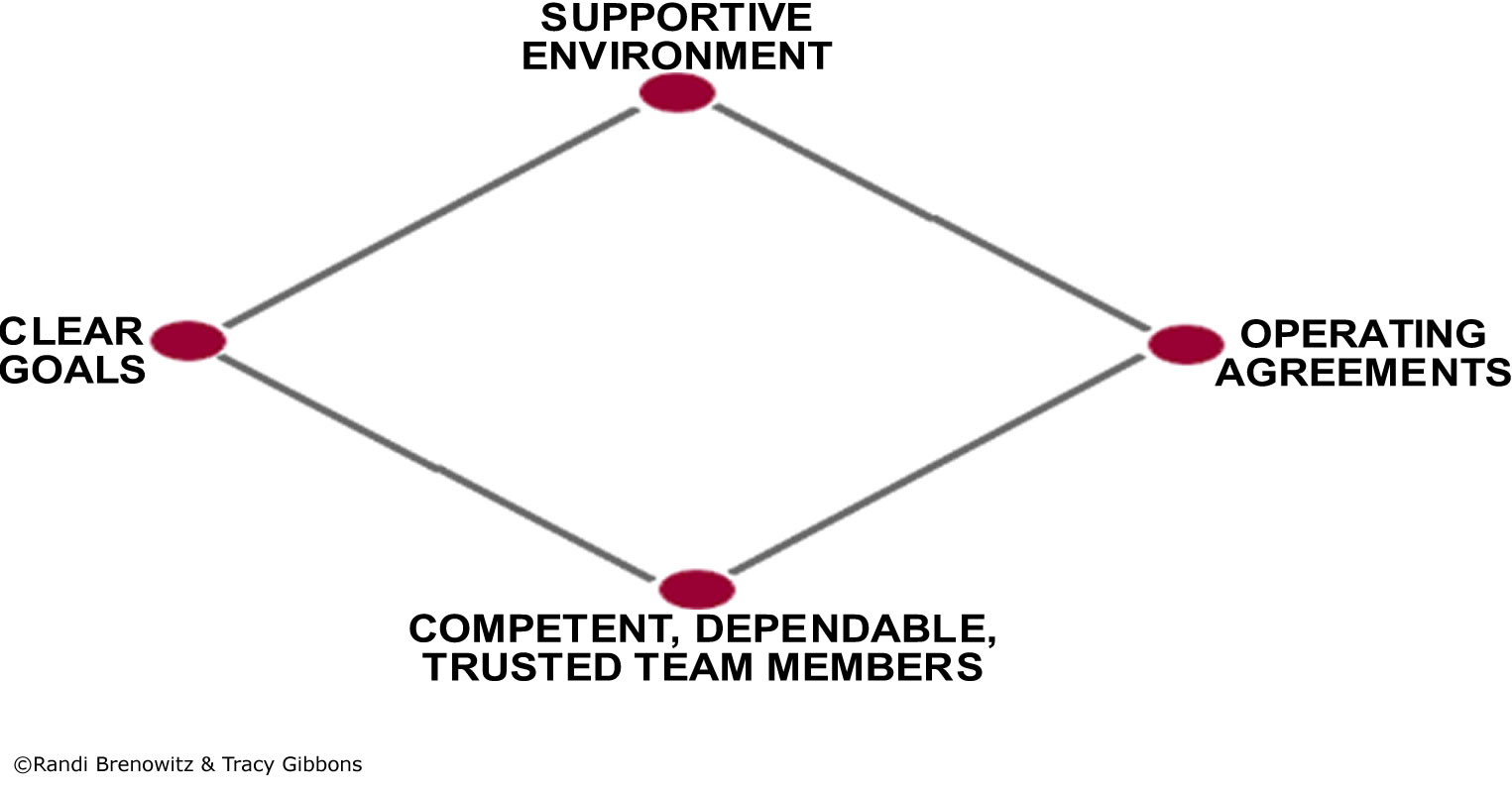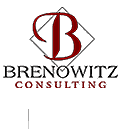         |
|
 |
 |
 |
|
Team
Essentials
by
R. Brenowitz
This article
appeared on HR.com, August 2002
The demands of today's global marketplace, technology, and product
complexity have created a new surge of interest in teams and teamwork.
Teams enable the intelligence and creativity of many to be used
to solve a complex problem. Merely assembling a group of highly
competent individuals does not, however, create an effective team.
The Team Essentials Model highlights the fundamental elements
necessary to begin creating a high-performing team.
The Team Essentials Model ©

The Team Essentials Model is simple but powerfully predictive.
Its clearly stated elements help define highly effective teams:
Team Performance = (f) (supportive environment
+ clear goals + operating agreements + competent, dependable,
trusted team members)
Supportive Environment
Any team effort is doomed from the beginning if it's not receiving
internal support from management. For example, has management
provided the team with the essential resources it needs to get
the job done? Are team members meeting in a desirable location,
and do they have the necessary tools to complete their tasks
(e.g. research materials, computers, networks, high-speed Internet
connection, laboratories, groupware, electronic bulletin boards,
etc.)? Does senior management ask for regular briefings on the
team's progress? Do they deal with the data they receive in
a way that supports the team's efforts? This level of support
speaks loudly to team members--boosting morale and assuring
all members that senior management notices and appreciates their
efforts toward achieving the corporate strategy.
Clear goals provide structure and direction for each individual
member of the team. They provide a vision toward which each
team member, and the team as a whole, can strive. Clear goals
also create the context in which team members can make their
day-to-day decisions. This is especially important in cross-functional
teams. With a single-function team, the team leader is clearly
the boss, but with a cross-functional team, the members are
in a matrixed organization. As a result, they have to answer
to the team leader and their functional boss. The more that
team members understand about team goals, priorities, and the
direction of the organization, the better they'll be able to
work on behalf of the team when they go back to their functions.
For a team to be effective, clear goals need to be established
and agreed upon from the very beginning. Team involvement in
goal setting will increase each member's buy-in and commitment.
This will be important when times get difficult and hard trade-offs
need to be made. In short, the clearer the goals, the more effective
the team can be.
These represent a clear set of agreements about how each member
of the team will behave and how the team will work together.
Team agreements generally include items like:
-
Where, when and how often the team will meet
-
What behavior is expected from each team member
-
How the team will make decisions and who will
be involved in decision-making
-
What decisions have to be made by the entire
group rather than being delegated to one individual
-
What communication forums will be used
-
What information will be shared with each
other
-
What information will be shared with the outside
world
-
What information will be kept confidential
-
How and when team members will ask each other
for help
Also, the team may want to have an agreement regarding what specific
communication tools and forums will be used (electronic bulletin
boards, email, face-to-face, voice-mail, sub-group meetings, etc.).
While everybody has preferences, a clear agreement must be made
about which of these the team will use and for what purpose. For
example, a team may decide to use email for all communication
saving voice-mail only for urgent matters.
Agreements should be as specific as possible. For example,
agreeing that email will be responded to in a "timely
fashion" may create a problem. Some team members may
define "timely fashion" as several days, while
others may think it means before the business day ends, or two
hours after the meeting ends, or "when I have the time."
The actual creation of agreements can serve as a team-building
process itself as the team will experience working together,
communicating, and making decisions. This experience can serve
as a model for how the team can work together in the future.
Competent, Dependable, Trusted Team Members
Perhaps the hardest part of the model to implement is building
the competence, dependability, and trustworthiness of team members.
Frequently, teams do not select their own members, but have
to work with those whom management has pre-selected.
If team members are not competent in their field of expertise,
the team must ensure proper training for them and set goals
and expectations accordingly. This means that team members must
be honest about their capabilities from the start-something
many are loath to do in today's highly competitive work environments.
If the team explicitly states their desire to help, not punish,
those in need of additional training or time, this will help
alleviate the fear of exposure.
Trust and dependability are defined here as knowing that your
team members will complete their deliverables, that they will
come through as promised, that they can be trusted with confidential
information, and, most importantly, that they will keep the
team agreements over time and even when that is hard to do.
Any team member who breaks the agreement must understand that
her or she is breaking the trust. Conversely, when team agreements
are kept over time, they build trust between each team member
and trust in the team process.
Early attention to each element of the model and a decision about
its relevance for your team is worth the time it takes. It will
ensure that all team members are part of establishing the goals
and strategies of the team and will put all of their efforts into
meeting their deliverables.
The model works equally well with single function, cross-functional,
and virtual teams in any industry. Although the process needs
to be adapted for each specific team, the elements in the model
remain constant and are the foundation upon which any organization
can build strong, high-performance teams.
© The Team Essentials Model is copyright Randi Brenowitz
& Tracy Gibbons. All rights reserved.
|
| |
|
|
|
 |



